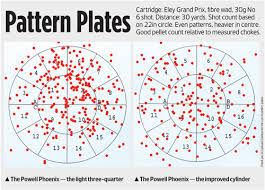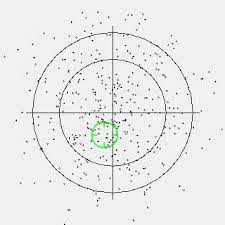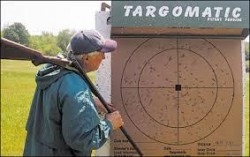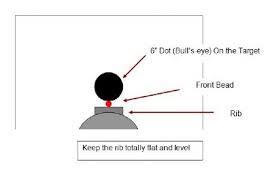 With the upland bird season just a month away I’d like to chat a little bit about patterning shotguns. I have found that very few shotgunners ever pattern their guns. Some of you might wonder why you should pattern a “scattergun.” Well, would you mount a scope on you rifle and go hunting without sighting it in, or take an open sighted gun to the field without knowing where the point of impact is? I hope not. Patterning a shotgun is basically the same thing as sighting in a rifle or handgun.
With the upland bird season just a month away I’d like to chat a little bit about patterning shotguns. I have found that very few shotgunners ever pattern their guns. Some of you might wonder why you should pattern a “scattergun.” Well, would you mount a scope on you rifle and go hunting without sighting it in, or take an open sighted gun to the field without knowing where the point of impact is? I hope not. Patterning a shotgun is basically the same thing as sighting in a rifle or handgun.
 Patterning a shotgun is simple, somewhat time consuming, and a little bit boring. The industry standard distance for patterning is 40 yards. Pattern densities for the various choke constrictions are measured at this distance. The number of pellets that hit inside a 30 inch circle at 40 yards divided by the number of pellets in the shot charge gives us a percentage that determines choke description. Here’s a list of shot percentages inside a 30 inch circle for the corresponding choke constriction.
Patterning a shotgun is simple, somewhat time consuming, and a little bit boring. The industry standard distance for patterning is 40 yards. Pattern densities for the various choke constrictions are measured at this distance. The number of pellets that hit inside a 30 inch circle at 40 yards divided by the number of pellets in the shot charge gives us a percentage that determines choke description. Here’s a list of shot percentages inside a 30 inch circle for the corresponding choke constriction.
- Full Choke: 70% or higher
- Improved Modified: 65%
- Modified: 55-60%
- Skeet No. 2: 55-60%
- Quarter Choke: 50%
- Improved Cylinder: 45%
- Skeet No. 1: 35-40%
- Cylinder: 35-40%
 For the average shooter, I recommend the following process to check the pattern of your shotgun. First you’ll need 6 sheets of paper or cardboard measuring 4’x4’. Draw a 4 to 6 inch circle in the middle of each sheet. You will be shooting one time at each sheet at 10, 30, and then 40 yards. Use a sight picture like the one shown in this post, the front bead of the shotgun pointed at the bottom of the circle. It will take a littl
For the average shooter, I recommend the following process to check the pattern of your shotgun. First you’ll need 6 sheets of paper or cardboard measuring 4’x4’. Draw a 4 to 6 inch circle in the middle of each sheet. You will be shooting one time at each sheet at 10, 30, and then 40 yards. Use a sight picture like the one shown in this post, the front bead of the shotgun pointed at the bottom of the circle. It will take a littl e time to shoot and then change the paper after each shot (the boring part), but when you are done you should have a pretty good idea just where the point of impact is in relation to your point of alignment.
e time to shoot and then change the paper after each shot (the boring part), but when you are done you should have a pretty good idea just where the point of impact is in relation to your point of alignment.
 Remember that you are looking only at a 2 dimensional picture of your pattern. But in reality, your shot string travels in 3 dimensions; length, width, and depth. We’ll explore this 3 dimensional aspect more in my next post, and then explain what the patterns can tell you about your gun.
Remember that you are looking only at a 2 dimensional picture of your pattern. But in reality, your shot string travels in 3 dimensions; length, width, and depth. We’ll explore this 3 dimensional aspect more in my next post, and then explain what the patterns can tell you about your gun.
Be safe and good shooting.
Colonel Smoothbore
www.guncoach.net